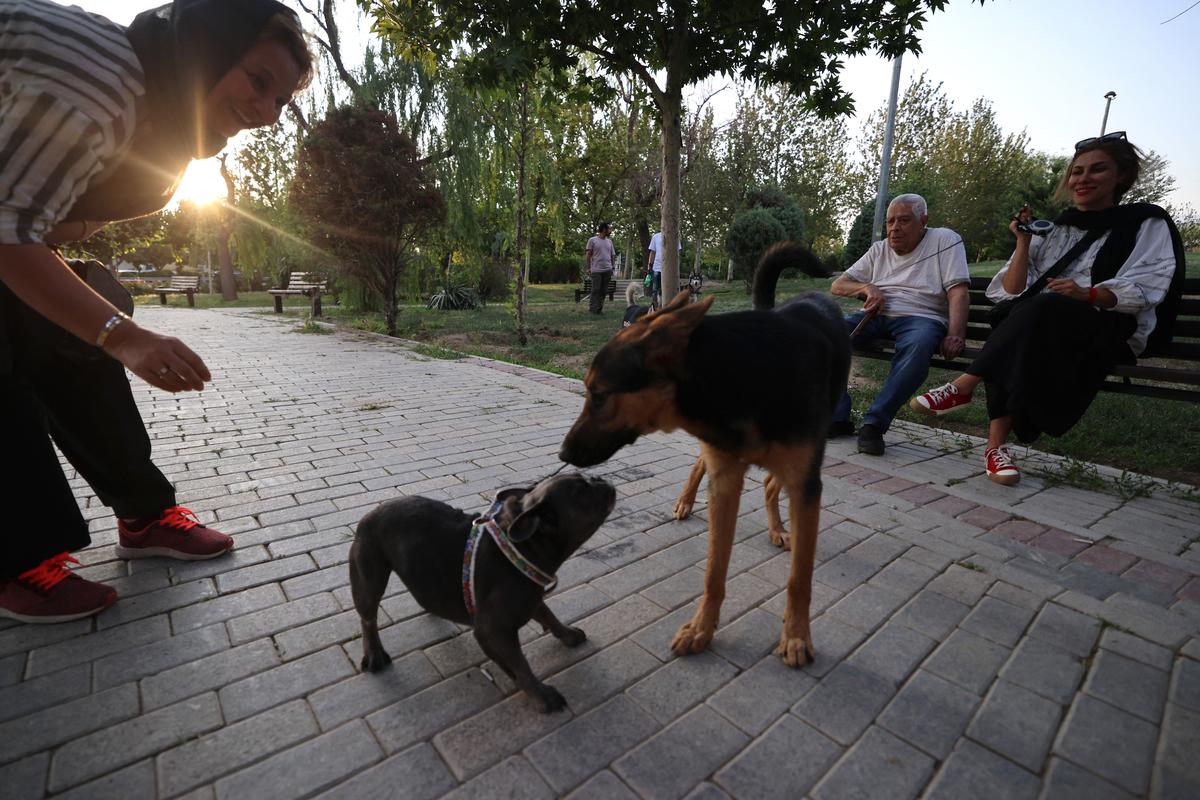In a controversial move, Iranian authorities have expanded their dog-walking ban to at least 18 cities across the country. The decision, citing public health and safety concerns, mirrors an earlier 2019 order that banned walking dogs in Tehran. Now, transporting dogs in vehicles is also outlawed, sparking outrage among citizens and human rights advocates alike.
The Roots of the Dog Ban in Iran

Since the 1979 Islamic Revolution, dog ownership has been discouraged in Iran. Authorities view dogs as “najis” (ritually impure) under Islamic law. Iran’s supreme leader Ayatollah Ali Khamenei has described dog ownership—unless for guarding, herding, or hunting—as “reprehensible.”
In 2021, 75 lawmakers labeled dog ownership a “destructive social problem” that could dilute the Islamic way of life. Despite these measures, dog ownership has increased, especially among Iranian youth who see it as a symbol of modernity and quiet resistance.
Enforcement and Resistance

The current wave of bans has reached major cities such as Isfahan, Kerman, and Ilam. In Ilam, officials have warned of legal action against violators. However, enforcement remains inconsistent, with many Iranians continuing to walk their dogs discreetly—often at night or in secluded areas.
There is no national law explicitly banning dogs, but local prosecutors frequently issue regional decrees enforced by police. Dog walkers have faced arrest, and dogs have been confiscated for being seen in public.
Religious and Cultural Opposition
- Dog ownership is seen by clerics as a Western import.
- Contact with dog saliva is considered unclean in Islamic tradition.
- The Ministry of Culture banned pet advertisements in 2010.
- A 2014 legislative attempt to fine or flog dog owners failed but set a lasting tone.
A Symbol of Personal Freedom
In Iran’s tightly controlled society, having a pet is not just about companionship—it is an act of quiet defiance. Just like refusing the mandatory hijab, attending underground parties, or drinking alcohol, dog ownership challenges theocratic control.
Critics of the crackdown argue the government should focus on public safety and economic concerns, not dog walking. As violent crime and inflation rise, the attention on pets appears to many as misplaced authoritarianism dog-walking.

International Concern and Human Rights
Global human rights organizations have highlighted this as another example of Iran’s intrusion into personal freedoms. The Amnesty International Iran Report regularly cites pet bans and dress code laws as part of systemic oppression.
Conclusion
The expanded dog-walking ban in Iran is more than a legal restriction—it reflects deep ideological battles between traditionalist authority and a younger, increasingly defiant population. As tensions rise, pet ownership in Iran remains both a personal joy and a political statement.
Image

For more on civil liberty crackdowns, read our piece on Iranian civil freedoms under pressure in 2025.









